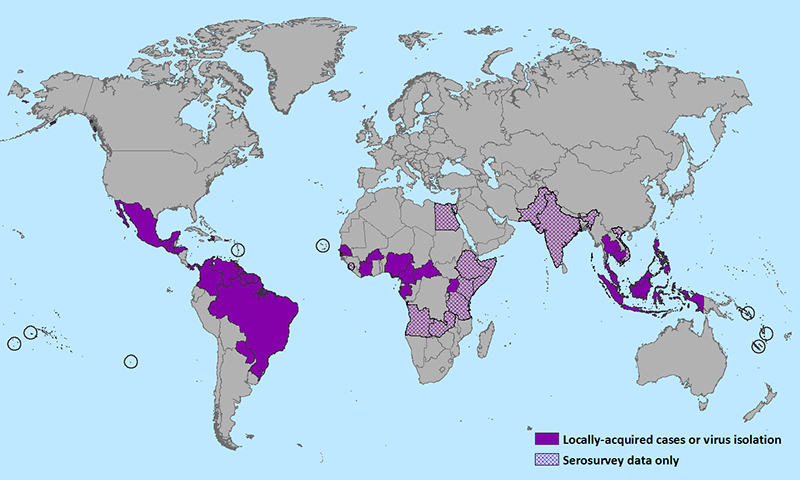Measuring the progress of Knowledge Management within an organisation is a tricky thing to do. Here's one method.
 |
| Zika virus map, from wikimediam commons |
People and teams don't go from a behaviour of ignoring knowledge as part of their work, to largely ignoring it, to slightly ignoring it etc - they go from ignoring knowledge, to treating knowledge as being of value. It's a binary switch.
If a team *really believes* in the operational value of knowledge, they will find their own way to work with it, using paper and pen and phone conversations if necessary. And if a team *really does not believe* in the operational value of knowledge, then the best toolkit in the world will not help them. You can't half-do KM.
This culture change is not a gradual change, it's a step change. It requires a different set of priorities, and a different way of working. It's more of a revolution than an evolution (see my post on trees and butterflies). It's more like a virus sweeping through a population - you have either caught the KM virus, or you haven't.
In a previous post, I presented 8 steps to attitude change, which lists the 8 steps any one individual will go through in their head and heart as you introduce KM. However there is only one step that leads to behaviour change, and that is the step of Trial; the point at which the individual tries KM.
Therefore you only know that the KM culture change is working, because there are some groups where the change has taken place. It's not that the whole culture is gradually changing, it's that you can point to examples who have bridged the culture gap, who have passed the Trial step, and who are thoroughly infected with the KM bug.
Measure the KM culture change in the same way that an epidemiologist measures the spread of a virus. Map out the progression of KM across your organisation, like you measure the spread of infection across the world (see the Zika virus map above).
The difference of course is that the epidemiologists and doctors are trying to control Zika, whereas you are trying to infect the organisation deliberately with KM - but the method of mapping progress is the same.
Draw a map. Make it visual. Show how KM is being adopted team by team and department by department. Show KM behaviours, indicated the adoption of a Knowledge Management Framework, moving across the organisation until the whole map turns green.




2 comments:
Nick, how could you get to know that a person (a team) is infected with KM-virus? Are there any visual and measurable symptoms?
Thank you, Zhanna
The best symptom to look for is that they start to do KM activities.
Post a Comment